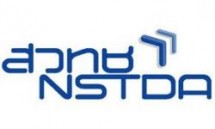IoT and the supply chain
| |
|||
| แหล่งที่มา : https://iot.eetimes.com/ |
วันที่โพสต์ : 20 เม.ย. 2561 | ||
| How The Internet of Things is Changing the Future of The Supply Chain |
|||
 |
|||
|
The proliferation of connected technologies across multiple industries is undeniable. Research firm Gartner put the figure of connected things in use at 8.4 billion in 2017, up 31% from the year before. That will reach 20.4 billion devices by 2020, Gartner predicted. Within these figures, it’s estimated that consumer applications represents 63% of total IoT applications in 2017. Impressive, sure, but worth noting is that this means business applications represent a huge part of this growing opportunity, as much as 37% last year. Peter Middleton, research director at Gartner, explains: |
|||
| Businesses are on pace to employ 3.1 billion connected things in 2017, Aside from automotive systems, the applications that will be most in use by consumers will be smart TVs and digital set-top boxes, while smart electric meters and commercial security cameras will be most in use by businesses. | |||
| Author Hailey McKeefrey adds:
|
|||
|
Grand View Research predicted that the global internet of things fleet management market size will reach $16.86 billion by 2025, which represents a compound annual growth rate (CAGR) of 20.8% during the forecast period. “Introduction of vehicular internet connectivity has triggered the rate of adoption for IoT fleet management,” the report states. The infographic from Alba Logistics below outlines some of the most promising areas: |
|||
 |
|||






